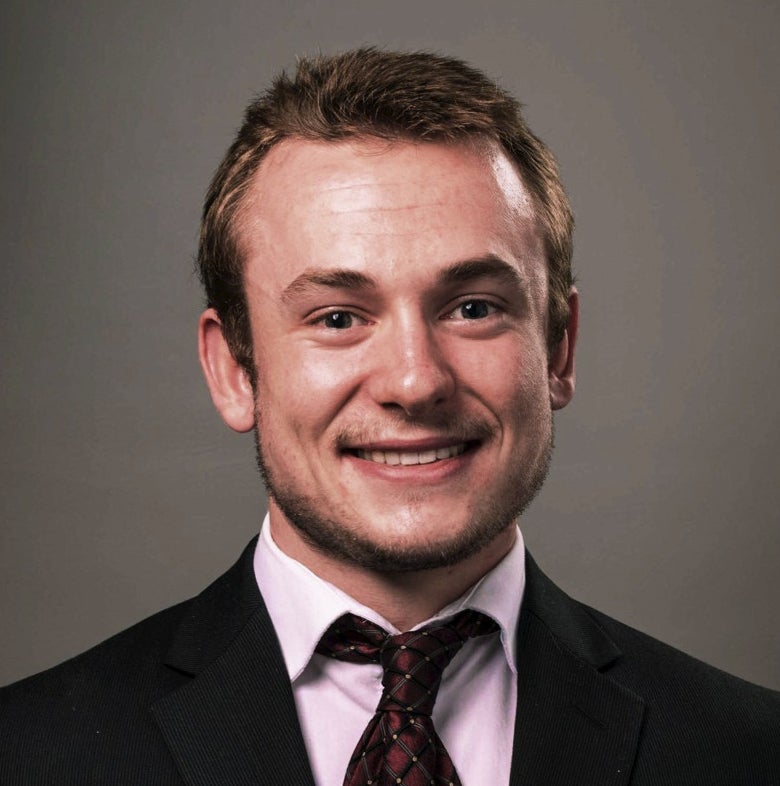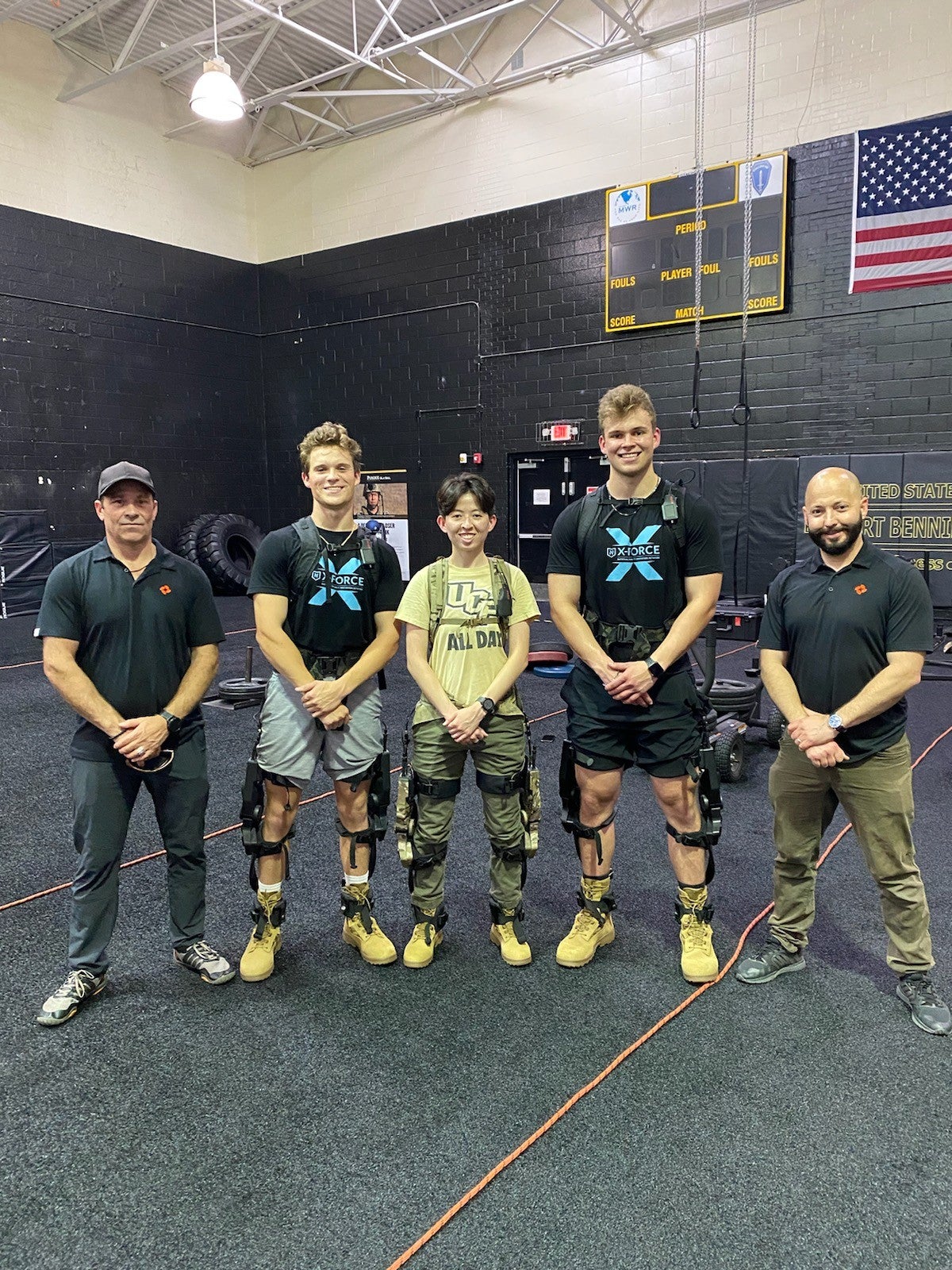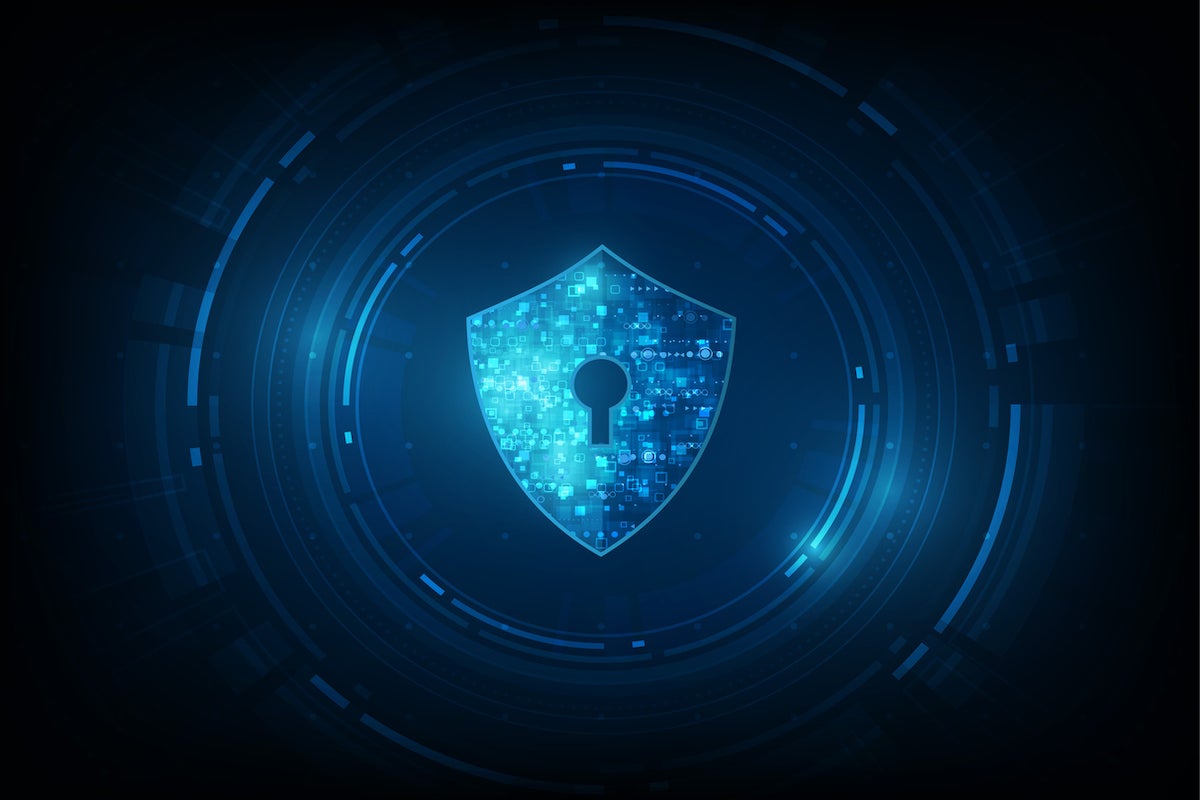Three UCF students spent the summer engineering new ideas to support the military through the highly competitive National Security Innovation Network X-Force Fellowship. Through the fellowship, students are paired with a military sponsor to work on a mission-focused project that solves real-world national security issues. Out of 600 applicants, UCF’s Patrick Borgman, Amy Lebanoff ’20 and Michael McMahon ’22 were three of 140 students from across the nation selected for this fully funded summer internship.
Using Lasers to Enhance Drones
Second-year electrical engineering master’s student Patrick Borgman worked for the U.S. Naval Surface Warfare Center in Crane, Indiana.
“I heard of some of my relatives’ stories of national service, especially my grandfather who was in World War II,” he says. “I used this fellowship as an opportunity to be like them with whatever abilities I have.”

Borgman was tasked with finding a way to deliver power to drones flying in inclement weather.
“This is important in a military combat situation, as you do not want to interrupt critical infrastructure such as communications and surveillance when the drone has to land and charge,” he says.
To simulate optical power beaming to the drones mid-flight, Borgman developed a MATLAB-based laser beam wireless energy simulator.
During the fellowship, Borgman had an opportunity to tour the facilities, see other research projects in development and network with the staff on the base. However, due to COVID-19 policies, Borgman completed his work virtually.
“I made sure to have a disciplined regimen: wake up at 4 a.m., work out, get coffee, get to work, and after eight hours, rest,” he says.
Borgman says he’s grateful to NSWC Crane for the experience and everyone who supported him along his journey so far, including his family, his undergraduate advisor from the University of North Florida, Hemani Kaushal, his volunteer supervisor Kalai Sankar, and his thesis advisor at UCF.
Taking the Army Farther, Faster
Soldiers can travel long distances with loads of armor, weapons, ammo, and other necessities that weigh up to 150 pounds. This can lead to injuries of the lower back and limbs. Lebanoff used their expertise in mechanical and biomedical engineering to figure out how U.S. Army soldiers can carry these extremely heavy loads on their backs farther, faster and with fewer injuries.
Working under the U.S. Army’s Robotics Requirement Division, Lebanoff, assessed the service branch’s capability to implement an exoskeleton that can bear substantial weight.

“An exoskeleton system — think less fancy Iron Man — should reduce the likelihood of injuries while increasing a soldier’s ability to travel further and faster under a heavy load,” Lebanoff says. “Along with two other fellows, I was tasked with assessing the Army’s current path toward an exoskelton capability and revising the document listing the desired characteristics for an exoskeleton system.”
While some X-Force fellowships were conducted virtually due to the pandemic, Lebanoff’s was in held in person at Fort Benning in Columbus, Georgia. They also had the chance to visit the U.S. Army Natick Solder Systems Center, a research and development lab in Boston that focuses on military food, clothing and shelter.
The biomedical engineering student, who earned their bachelor’s degree in mechanical engineering from UCF as a student of the Burnett Honors College, says the experience gave them an inside look at the military’s science and technology ecosystems, which they just might be a part of one day.
“Personally, I’ve gained a renewed interest in working with and possibly joining the military,” Lebanoff says. “Whichever path I follow, I know I’ll have the support of my fellowship supervisors and connections made along the way who facilitated a summer experience of growth and impact.”
Using Light to Maximize Communications
Michael McMahon ’22, a master’s student in CREOL, The College of Optics and Photonics, spent his summer at the University of Missouri at Kansas City, home to the Missouri Institute of Defense and Energy (MIDE). A collaboration between MIDE and the Office of Naval Research, McMahon’s project focused on using light and a highly-specialized crystal — lithium niobate — to detect radiofrequency (RF) waves.
Unlike traditional X-Force teams that deliver a final functional product, McMahon’s team conducted fundamental research. He was the sole lead of the electro-optic project — the area of study which uses light in combination with electronics.
“My responsibilities included designing and setting up the experimental aspects of our research,” says McMahon, who earned a bachelor’s in photonics science and engineering from UCF. “It was my responsibility to become an expert with the equipment we had and use it to its limits to gather data necessary to verify what we were looking for — evidence of electro-optic sensing with lithium niobate.”
Electromagnetic waves are used in all communications including cell phones, Bluetooth and Wi-Fi. Communications on the newest 5G standard have frequencies anywhere from 600 megahertz to around 50 gigahertz, or 600 million to 50 billion cycles (waves) per second. Light has a frequency of trillions of cycles per second making it a very attractive way to move information. Higher frequency = faster information.
Because of the limited availability of the circuits needed to convert the extremely high frequency waves of light to information that computers can process, it is not yet possible to use the technology McMahon was working on for communication. In the meantime, there is a practical use.
Lithium niobate crystals are much smaller and lighter than electronics currently used to measure RF waves. A “probe” can be made using the crystals to detect and intercept unknown signals around us.
“The military is interested in this kind of technology as reducing size, weight and power is a common goal,” McMahon says. “And because the probe uses light, tremendous amounts of information can be detected. Finally, light is immune to interference frequently seen in electromagnetic warfare, which makes it a secure communication method in times of war.”




